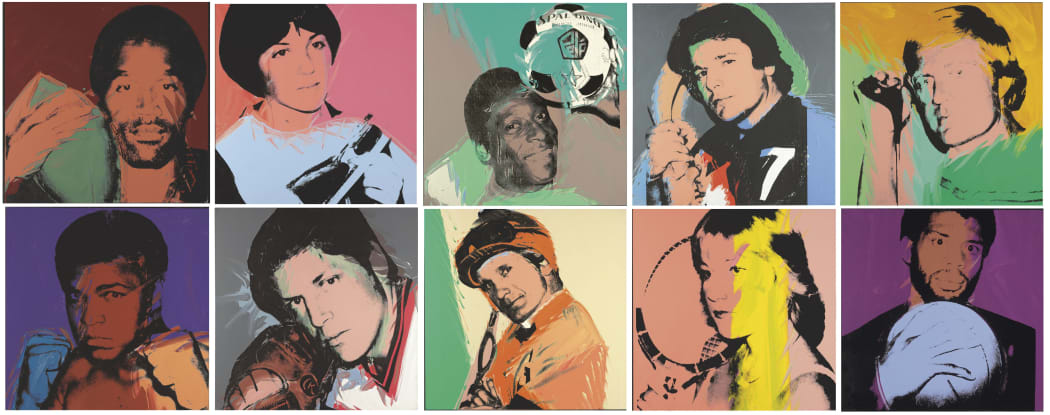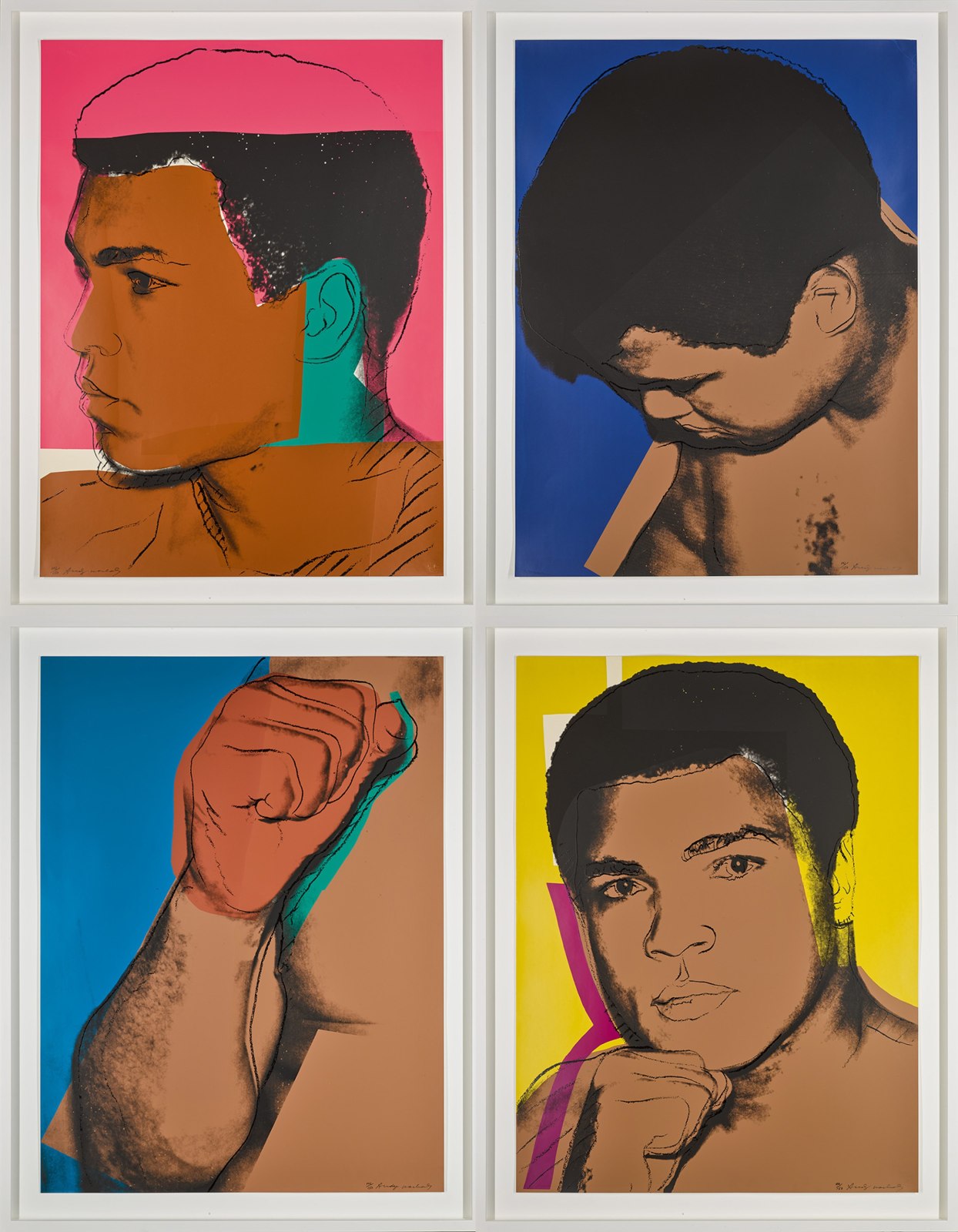
Sport and art have a long standing relationship that can be traced back nearly as long as the span of human civilization. Indeed, some of the first artistic expressions of humanity relate to sport. From cave paintings depicting hunters hurling their spears at long deceased beasts to Ancient Greek urns celebrating the sporting achievements of armour-clad heroes, it seems that venerating our sporting prowess is inherent within our species and art can be the vehicle for this. Sport itself proliferates almost every aspect of our current society and you would be hard pressed to not to find today’s sporting heroes documented across social, print media and beamed into our homes on our various streaming services and live tv programmes.
It was in 1977 that Richard Weisman proposed the idea of exploring sports figures to Warhol. As an avid sports fan, Weisman suggested that Warhol create a series of screen prints portraying the leading sports stars of the day. Warhol, the leading artist of the pop art movement, was an enthusiast of pop culture and Weisman recognised the growing commercialisation of sports. Weisman viewed this project as a way of blending sports and art.
Sports personalities were an interesting departure from Warhol’s usual society portraits and the paintings mark a period in which top athletes first began to inhabit the world of celebrity.
Weisman has commented, “I felt putting the series together was natural, in that two of the most popular leisure activities at the time were sports and art. I thought that having Andy do the series would inspire people who loved sports to come into galleries, maybe for the first time, and people who liked art would take their first look at a sports superstar.”
Weisman chose the subjects for the series—photos were printed on canvas and embellished further with paint—the portraits include representations of Muhammad Ali, O.J. Simpson, Dorothy Hamill, Kareem Abdul-Jabbar, Chris Evert, Jack Nicklaus, Willie Shoemaker, Rod Gilbert, Tom Seaver, and Pelé. Three others were considered, then dropped: Evel Knievel, because there was some dispute whether he was an athlete; Julius Erving, because of a contractual issue, and Nadia Comaneci, because of the difficulty contacting the Romanian Athletics Federation.
Ten 40 x 40 inch portraits were commissioned by Weisman for $800,000, and Warhol produced eight sets. Warhol travelled across the United States, to take Polaroid photographs of each sports star. At his studio, the Factory, he transferred his chosen frames to canvas and applied the colour using his silk screening technique.
One portrait was given to each subject, and one portrait of each subject went to Warhol. Of the other sets, three were given to Weisman's children, two were given to the University of Maryland Art Gallery and to University of California, Los Angeles, and one was split among the associations pertaining to each sport.
Warhol was unfamiliar with many of the famous athletes depicted in these works before Weisman approached him. Warhol soon became enamoured with the fame and fanaticism surrounding sports stars, saying “I really gotta love the athletes because they are the really big stars.”
The works were exhibited in an exhibition that opened at the Coe Kerr Gallery on East 82nd Street in New York City on December 9, 1977 and the portraits on display were for sale at $25,000 each.
Warhol made nine individual paintings as "extras," which led to a dispute after his death between his estate, the Andy Warhol Foundation, and Weisman.Weisman had a contract stating that he was the owner of all of the Athletes paintings. "In the end we settled, they gave me all of the Athletes paintings they had and I donated half of them back to the foundation on the understanding that they were not to be sold on the open market without my permission,".

Like with many of Warhol’s other motifs, a print version was created of the Muhammed Ali image in a variety of different poses. In each screen print, Ali’s features are enhanced by intense and bright shades of colour. Three of the images feature his profile, his eyes shining as he readies for a fight. One image features his clenched fist which is typically associated with aggression and power. This series revisits the theme of violence which was previously introduced in Warhol’s Disaster Series. Warhol once again capitalises on the public fascination with violence in a poignant way. In this way, Warhol illustrates how such fanaticism and fascination breed celebrity. In this instance, success from sport fuels the public interest in Muhammed Ali and his celebrity. For more information on any of our Andy Warhol screenprints for sale, contact Andipa Editions on sales@andipa.com or call +44 (0)20 7589 2371.
Explore more American Pop with our Roy Lichtenstein original prints for sale and Keith Haring signed and unsigned prints.